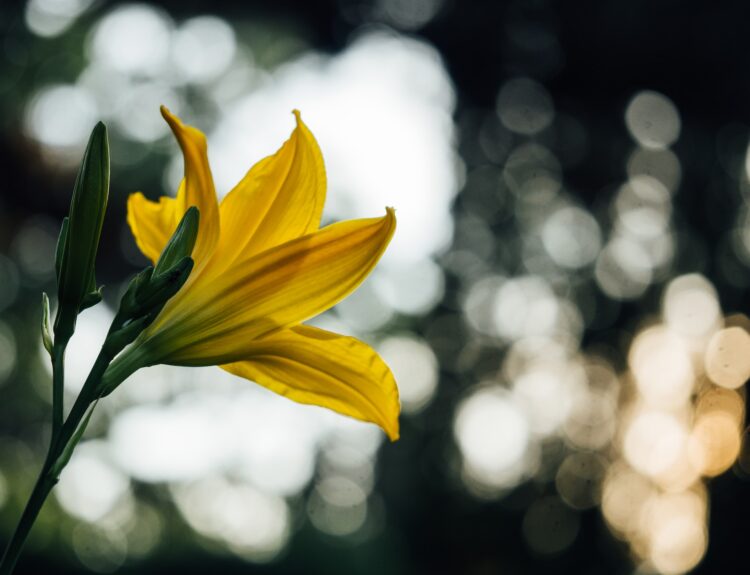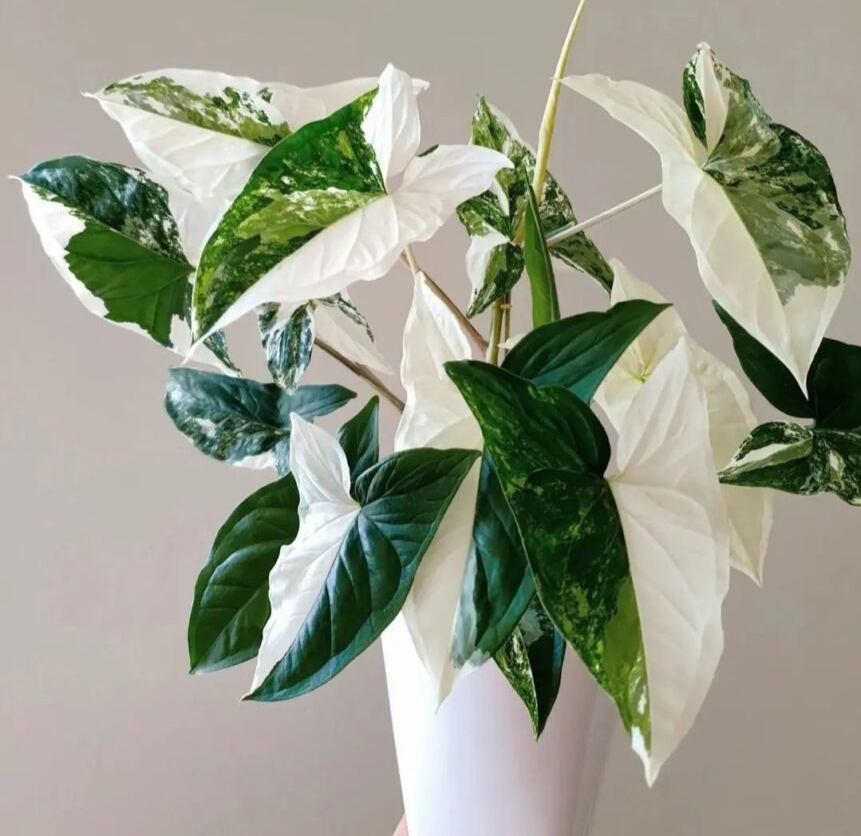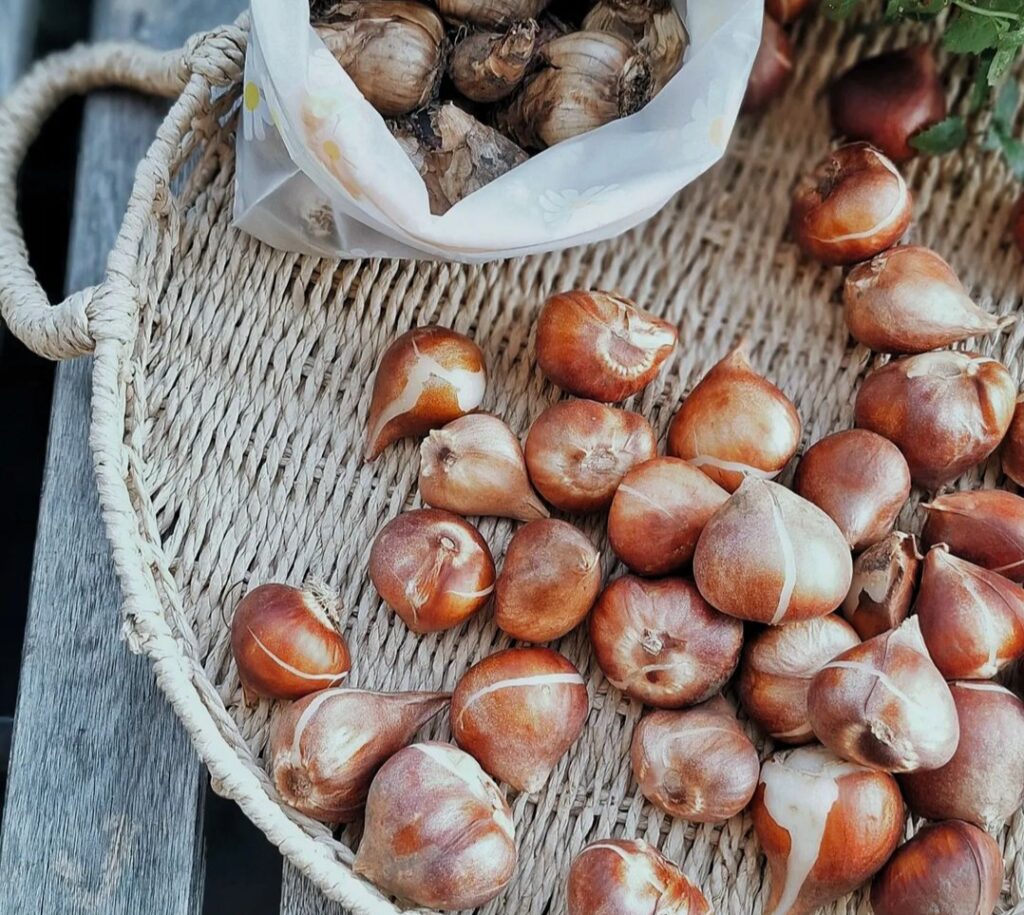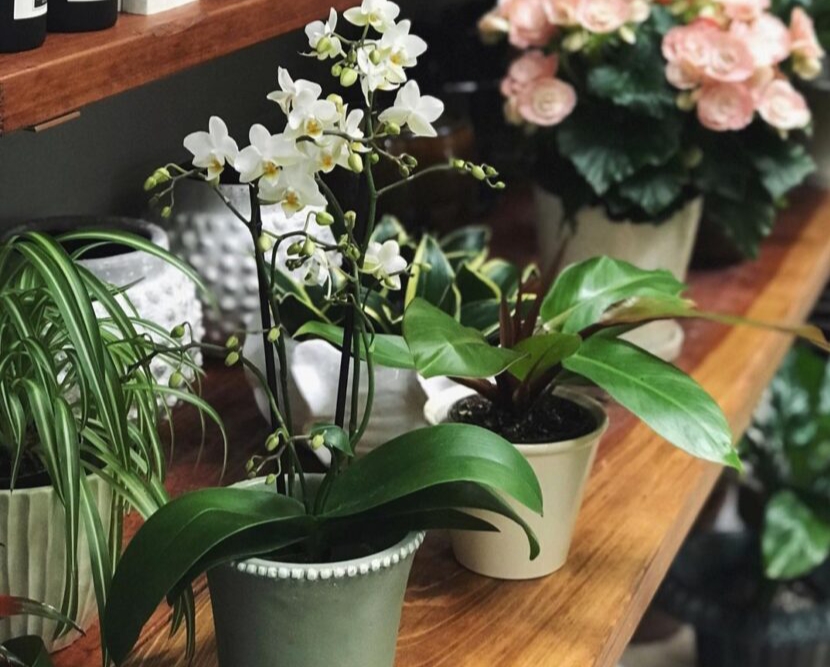Yellow Lily, scientifically known as Hemerocallis lilioasphodelus, is an herbaceous perennial plant that belongs to the Xanthorrhoeaceae family. Originating from Europe, it is a popular ornamental plant cultivated in gardens. With its long, arching green leaves and bright yellow, trumpet-shaped flowers, the yellow lily adds a touch of beauty to any landscape. The flowers, which emit a delightful fragrance, bloom in late spring or early summer on tall stems, with each bloom lasting for a day. Thriving in full sun or partial shade and well-drained soil, Yellow Lily is a hardy plant that can tolerate a wide range of climates and is suitable for USDA hardiness zones 3–9. With low maintenance requirements, such as regular watering and deadheading, Yellow lilies can be propagated through division or seed sowing. Overall, the yellow lily is a charming plant that brings vibrancy and elegance to gardens and landscapes.
Yellow Lily’s Types
Yellow lilies are a beautiful variety of lilies that come in various types. Here are a few common types of yellow lilies:
Asiatic Lilies: Asiatic lilies are one of the most popular types of lilies, and they come in a wide range of colours, including yellow. These lilies have upward-facing blooms with multiple petals and are known for their vibrant and bold colours.
Trumpet Lilies: Trumpet lilies, also known as Aurelian lilies, are another type of lily that can be found in yellow varieties. These lilies have large, trumpet-shaped flowers with a sweet fragrance. They often have a combination of yellow and white or cream-coloured petals.
Oriental Lilies: While Oriental lilies are more commonly associated with pink and white colours, there are also yellow varieties available. Oriental lilies are known for their large, fragrant flowers and are often prized for their captivating scent.
Martagon Lilies: Martagon lilies, sometimes called Turk’s cap lilies, are another type that can occasionally be found in yellow hues. These lilies have downward-facing blooms with recurved petals, giving them a unique appearance. They typically have numerous small flowers clustered along the stem.
LA Hybrid Lilies: LA hybrid lilies are a cross between Longiflorum (Trumpet) lilies and Asiatic lilies. They exhibit characteristics of both parent types and come in a wide array of colours, including yellow. These lilies have upward-facing or slightly outward-facing blooms.
These are just a few examples of yellow lilies, and there may be other varieties and hybrids available on the market. Remember that the availability of specific types of lilies may vary depending on your location and the season.
Pruning yellow lilies
Pruning yellow lilies is an important aspect of their care to ensure healthy growth and optimal blooming. Here are some guidelines for pruning yellow lilies:
Remove spent flowers: After the yellow lily blooms start to fade and wilt, it’s advisable to remove the spent flowers. This process is called deadheading. Deadheading prevents the plant from expending energy on producing seeds and redirects that energy towards bulb development and growth. Cut off the faded flowers just above the first set of healthy leaves or nodes on the stem.
Trim yellowed or damaged foliage: If you notice any yellowed, withered, or damaged foliage on the lily plant, it’s best to remove it. Use clean and sharp pruning shears or scissors to cut the damaged leaves or stems close to the base of the plant. Removing unhealthy foliage helps maintain the overall appearance of the plant and prevents the spread of diseases.
Cut back the stems in the fall. Once the yellow lily plant has finished flowering for the season and the foliage begins to turn yellow or brown, you can cut back the stems to about 6 to 8 inches above the soil level. This pruning helps tidy up the plant and prepare it for winter dormancy.
Leave the foliage until it dies back naturally. While it’s necessary to remove damaged or yellowed foliage, it’s generally recommended to allow the remaining healthy foliage to die back naturally. The green leaves contribute to the energy production and storage in the bulb, which is essential for next year’s growth and blooming. Trimming the foliage too early can weaken the bulb.
Remember to wear gloves while handling lilies since their sap may irritate the skin. Additionally, it’s important to clean your pruning tools with a disinfectant before and after use to prevent the spread of diseases among plants.
Keep in mind that these pruning guidelines are general recommendations, and specific care instructions may vary depending on the particular type of yellow lily you have. It’s always helpful to refer to specific care guides or consult local gardening experts for tailored advice based on your specific lily variety and growing conditions.
Propagating yellow lilies
Yellow lilies can be propagated through various methods, including division, bulb offsets, and stem cuttings. Here are some common techniques for propagating yellow lilies:
Division: Division is the most common method of propagating lilies. It’s typically done in late summer or early autumn, when the foliage starts to die back. Here’s how to do it: a. Dig up the lily bulbs carefully, taking care not to damage them. b. Gently separate the smaller bulbs (known as bulbils or offsets) from the main bulb. c. Each offset should have some roots and a small portion of the stem attached. d. Replant the offsets immediately in a new location or container with well-draining soil. e. Ensure the soil is kept moist and provide the newly planted bulbs with adequate sunlight.
Bulb offsets: Some lily bulbs naturally produce small offsets around the base. These offsets can be carefully removed and replanted to create new plants. Wait until the offsets are large enough to handle and have developed their own roots and shoots before detaching them from the main bulb. Plant them in a suitable location or container, following the same care instructions as for division.
Stem cuttings: While less common, stem cuttings can be used to propagate certain types of lilies, including those with fleshy stems. Here’s how to propagate lilies from stem cuttings: a. Select a healthy stem from the parent plant that has not yet bloomed. b. Using clean and sharp scissors or a knife, cut a 4-6 inch (10–15 cm) section of the stem just below a leaf node. c. Remove the lower leaves from the cutting, leaving a few leaves at the top. d. Dip the cut end of the stem into rooting hormone (optional) to promote root development. e. Plant the cutting in a pot filled with well-draining soil or a suitable rooting medium. f. Keep the soil slightly moist and provide indirect light and high humidity to encourage rooting. g. Once the cutting develops roots and shows signs of new growth, it can be transplanted into a larger pot or directly into the garden.
Remember to provide proper care and maintenance to the newly propagated yellow lilies, including adequate sunlight, water, and fertilisation. Not all lilies may be easily propagated through stem cuttings, so it’s important to research the specific variety you have for the best propagation method.
Potting
Potting yellow lilies is a great way to grow them in containers or pots, allowing you to enjoy their beauty and fragrance even if you have limited garden space. Here are some steps to pot yellow lilies:
Select a suitable pot. Choose a container that is at least 12–16 inches (30–40 cm) in diameter and has drainage holes at the bottom. The pot should provide enough space for the lily bulb(s) to grow and allow water to drain freely.
Prepare the potting mix: Use a well-draining potting mix specifically formulated for bulbs or general-purpose potting soil mixed with perlite or sand. This type of soil allows for proper drainage and aeration, preventing waterlogged conditions.
Plant the bulbs: Place the lily bulbs in the potting mix with the pointed end facing up. The bulbs should be positioned at a depth of about 2–3 times their own height. For example, if the bulb is 2 inches tall, plant it about 4-6 inches deep. Space the bulbs apart according to the specific lily variety’s spacing requirements.
Fill the pot: Gently backfill the potting mix around the bulbs, ensuring that the soil is evenly distributed and the bulbs are firmly in place. Leave about an inch of space between the soil surface and the rim of the pot to allow for watering.
Watering and care: After potting, thoroughly water the lilies to settle the soil and provide initial moistureThroughout the growing season, maintain an even moisture but avoid flooding the soil.
Check the soil moisture regularly by inserting your finger about an inch into the soil; if it feels dry, it’s time to water.
Sunlight requirements: Place the potted lilies in a location that receives at least 6–8 hours of direct sunlight each day. Lilies thrive in full sun but can tolerate partial shade in hot climates.
Fertilisation: Feed the potted lilies with a balanced, slow-release fertiliser or bulb fertiliser according to the package instructions. Apply the fertiliser in early spring and again after the lilies have finished blooming. Be sure to water the plants after fertilising to prevent fertiliser burn.
Support and staking: Some tall lily varieties may require support to prevent their stems from bending or breaking under the weight of the flowers. Insert stakes or plant supports near the bulbs at the time of potting or as the plants grow to provide stability.
Maintenance: Remove spent flowers by deadheading to encourage continuous blooming and prevent seed production. Trim yellowed or withered foliage as needed to maintain a tidy appearance.
Overwintering: In areas with cold winters, protect the potted lilies by moving them to a sheltered location or covering the pots with mulch to insulate the bulbs. Alternatively, you can dig up the bulbs and store them in a cool, dry place for the winter, then replant them in the pots in the spring.
Remember to monitor the health of your potted yellow lilies regularly, looking out for signs of pests, diseases, or water stress. With proper care and attention, potted yellow lilies can thrive and bring beauty to your indoor or outdoor spaces.
Overwintering care
Overwintering care for yellow lilies is crucial, especially in regions with cold winters where the bulbs may be susceptible to frost damage. Here are some steps to ensure proper overwintering of your yellow lilies:
Timing: Overwintering care typically begins after the lilies have finished flowering and the foliage starts to turn yellow or brown. Typically, this takes place in the late summer or early fall. It’s important to allow the foliage to die back naturally before proceeding with overwintering.
Cutting back foliage: Once the foliage has completely withered and turned yellow or brown, cut it back to within a few inches of the soil level. However, do not remove the foliage prematurely, as it provides nutrients to the bulb and helps it prepare for dormancy.
Digging up the bulbs: In regions with extremely cold winters or if you prefer to provide extra protection, it’s advisable to dig up the lily bulbs for overwintering. Use a garden fork or shovel to carefully lift the bulbs from the ground, taking care not to damage them.
Bulb inspection and cleaning: Gently remove excess soil from the bulbs and inspect them for any signs of damage or disease. Discard any bulbs that appear unhealthy or soft. If necessary, you can rinse the bulbs with water to remove any remaining soil, but allow them to dry completely before storage.
Storage conditions: Yellow lily bulbs should be stored in a cool and dry location during the winter months. Ideal storage temperatures range between 40°F (4°C) and 50°F (10°C). Avoid areas prone to temperature fluctuations or excessive humidity, such as basements. You can use a mesh bag, paper bag, or shallow tray with peat moss, vermiculite, or dry sand as a storage medium.
Labelling: It’s helpful to label the bulbs before storing them to keep track of the different varieties. This will make it easier to replant them in the correct locations in the spring.
Regular inspection: Periodically check the stored bulbs throughout the winter to ensure they remain firm and healthy. Discard any bulbs that show signs of rot, mould, or other damage.
Replanting in spring: As winter fades and the danger of frost has passed, it’s time to replant the lily bulbs. Choose a suitable location in the garden or prepare new pots for potting. Follow the potting instructions mentioned earlier in this conversation. Plant the bulbs at the appropriate depth, taking care not to plant them too shallowly or too deeply.
By providing proper overwintering care, you can protect the bulbs of your yellow lilies and ensure their successful regrowth and blooming in the following year.
Bloom
Yellow lilies produce beautiful blooms that add vibrant colour and elegance to gardens and floral arrangements. Here’s some information about the blooming process of yellow lilies:
Bloom time: The exact bloom time of yellow lilies can vary depending on the specific variety, local climate, and growing conditions. Generally, yellow lilies bloom during the summer months, typically from mid- to late-summer. The exact timing may differ between different types of yellow lilies, so it’s important to consult the specific information for the variety you are growing.
Blooming duration: The duration of the bloom can also vary depending on the variety and environmental factors. Generally, the blooming period for yellow lilies ranges from a few weeks to a couple of months. During this time, the lilies will display their vibrant yellow flowers, adding a burst of colour to the garden.
Flower appearance: Yellow lilies typically produce large, showy flowers with multiple petals. The exact shape and size of the flowers can vary depending on the specific type or hybrid. Some yellow lilies may have upward-facing blooms, while others may have downward-facing or slightly nodding flowers. The petals are usually a vibrant shade of yellow, and some varieties may exhibit subtle colour variations or markings.
Fragrance: Many yellow lilies, especially the Oriental and Trumpet varieties, are known for their delightful fragrance. The scent can vary from mild and sweet to strong and intoxicating. It’s worth noting that not all yellow lilies have a noticeable fragrance, so it’s important to check the characteristics of the specific variety you are growing.
Care for optimal blooming: To encourage healthy blooming, it’s important to provide the yellow lilies with proper care. This includes providing them with adequate sunlight (at least 6–8 hours of direct sunlight per day), well-draining soil, regular watering to keep the soil moist but not waterlogged, and periodic fertilisation with a balanced fertiliser formulated for flowering plants. Removing spent flowers (deadheading) can also promote continuous blooming and prevent seed production.
Remember that the blooming characteristics of yellow lilies may vary depending on the specific variety you are growing. It’s always helpful to refer to the care instructions and recommendations provided with the specific lily bulbs or consult local gardening experts for tailored advice based on your region and the type of yellow lilies you have.
Common Issues
While yellow lilies are generally hardy plants, they can face a few common issues that may affect their health and blooming. Here are some common issues that yellow lilies can encounter:
Pests: Lilies can be susceptible to certain pests, including aphids, lily leaf beetles, and slugs.These pests can harm a plant’s blossoms and leaves.Regularly inspect your yellow lilies for any signs of pests and take appropriate measures to control them, such as using insecticidal soaps, organic pest control methods, or seeking advice from a local garden centre.
Diseases: Yellow lilies can be prone to various fungal diseases, such as botrytis blight, lily mosaic virus, and grey mould. These diseases can cause spotting, discoloration, wilting, or deformity of the leaves and flowers. Ensure good air circulation around the plants and avoid overhead watering to minimise the risk of fungal infections. If you notice signs of disease, promptly remove and dispose of the affected plant parts to prevent their spread.
Overwatering: Yellow lilies appreciate soil that is wet yet has good drainage. Root rot and fungi illnesses are brought on by overwatering. Between waterings, it’s crucial to let the top inch of soil slightly dry out. Make sure the planting sites or containers have adequate drainage to avoid waterlogging.
Poor blooming: If your yellow lilies are not blooming well, several factors could be at play. Insufficient sunlight, inadequate nutrients, overcrowding, or bulbs that have become too old and need division may hinder blooming. Ensure that the lilies receive enough sunlight, provide proper fertilisation according to their specific needs, and consider dividing the bulbs every few years to rejuvenate the plant.
Environmental stress: Extreme weather conditions, such as excessive heat or drought, can stress yellow lilies and affect their health and blooming. Provide shade during intense heat, water consistently during dry spells, and protect the plants from strong winds to minimise stress.
Bulb rot: Improper drainage, overwatering, or planting bulbs in soil that retains excessive moisture can lead to bulb rot. This can cause the bulbs to become mushy and discoloured and fail to produce healthy shoots. Ensure well-draining soil, provide proper watering practises, and avoid planting bulbs in areas prone to waterlogging.
Regular monitoring, proper care, and timely intervention can help prevent or address these common issues with yellow lilies. If you encounter persistent or severe problems, it’s advisable to consult with a local horticulturist or gardening expert for specific guidance and solutions based on your growing conditions.
How do you propagate yellow lilies?
To propagate yellow lilies, you can use several methods, such as division, bulb offsets, or stem cuttings.
What are the propagation methods for lilies?
Propagation methods for lilies include division, bulb offsets, stem cuttings, and seed sowing.
Can lilies be divided? Do lily bulbs divide?
Yes, lilies can be divided. Dividing lilies involves separating the bulbs or rhizomes to create new plants.
Do lily bulbs divide?
Lily bulbs can divide and produce new bulbs as a method of natural propagation.
Do yellow lilies like sun or shade?
Yellow lilies generally prefer full sun to partial shade.
How do you grow lilies at home?
Lily bulbs should be planted in well-drained soil at home, preferably in the early spring or late autumn. Give them access to enough sunlight, regular hydration, and sporadic fertilisation. A healthy growth can also be ensured by mulching and pest defence.
Is lily easy to grow?
Lilies are generally considered moderately easy to grow, as long as their basic requirements are met. With proper care and attention, they can thrive in home gardens.
Where is the best place to keep a lily plant?
The best place to keep a lily plant is in a location that receives ample sunlight, preferably 6 to 8 hours a day. It’s important to choose a well-drained spot with good air circulation. However, certain lily varieties may have specific light requirements, so it’s advisable to check the specific needs of the variety you have.




